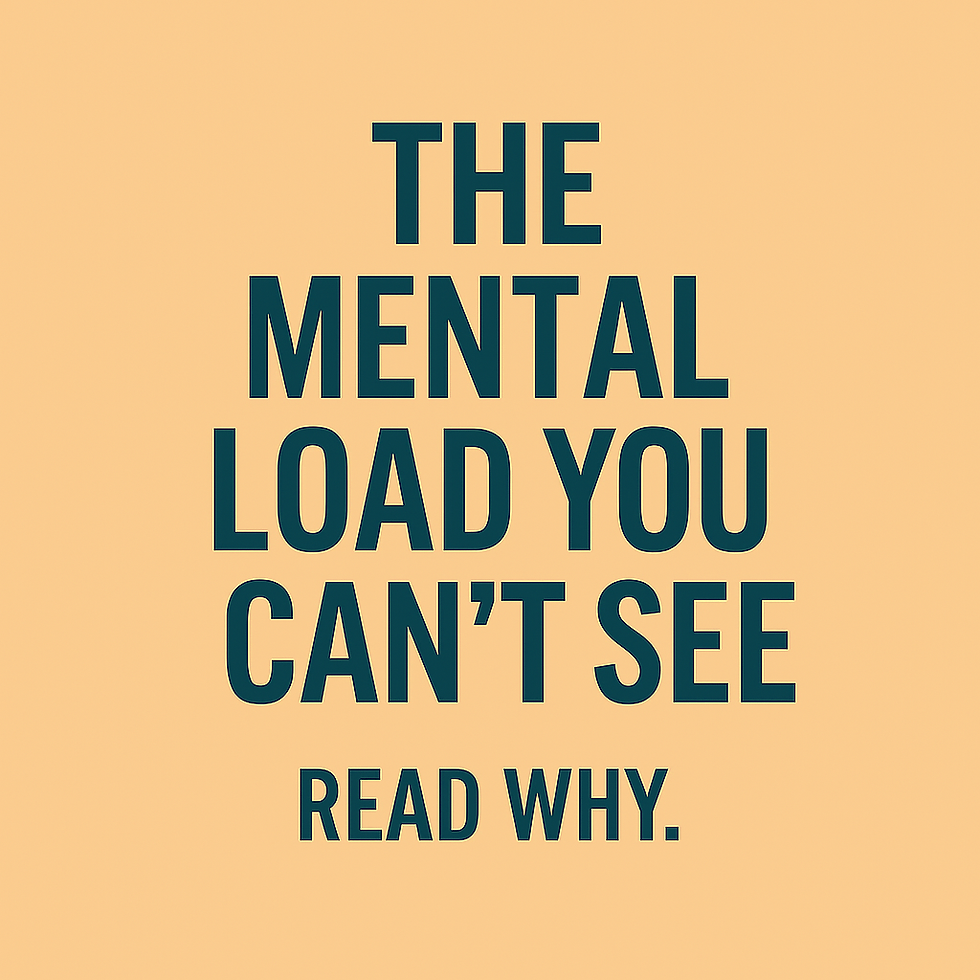The Mental Load You Can’t See
- James Link

- Apr 4
- 2 min read

If you’ve ever come home exhausted and couldn’t explain why — this is for you.
Most people think being "tired" means you physically did too much. But for neurodivergent people, being tired often means we’ve been managing too much internally — silently, invisibly, and without acknowledgment. This blog is about giving a name to that invisible weight, and why it matters.
What Is the Mental Load?
The mental load refers to all the invisible cognitive and emotional effort it takes to function, especially in a world that wasn’t designed with neurodivergent wiring in mind.
For neurodivergent folks, the mental load includes:
Constant emotional regulation
Anticipating others’ reactions
Masking autistic traits or ADHD behaviors
Filtering overwhelming sensory input
Trying to follow unspoken social rules
It’s the nonstop internal checklist that runs all day long — even when you’re doing something "simple" like attending class, going to work, or socializing with friends.
What People Don’t See
The hardest part? Most of this work is invisible.
Here are just a few examples of what neurodivergent people manage behind the scenes:
Smiling and nodding when you're on the verge of shutdown
Rehearsing every sentence before speaking out loud
Trying to focus in an environment filled with sensory distractions
Holding back natural stimming behaviors to avoid judgment
Managing anxiety, self-doubt, or overstimulation while acting "fine"
People may not notice these things. But you feel them. Deeply.
How This Leads to Burnout and Fatigue
When you’re carrying this mental weight every day, it adds up fast. That’s why so many neurodivergent people experience:
Chronic exhaustion
Executive function crashes
Decision fatigue
Anxiety and irritability
Emotional shutdown or burnout
This isn’t a personal failing. It’s a natural result of living in constant "overdrive."
You’re not lazy, unmotivated, or weak — you’re overloaded.
CBT Tip: Externalizing the Mental Load
In Cognitive Behavioral Therapy (CBT), one helpful strategy is to externalize what you’re carrying.
Here are a few ways to do that:
Thought Journaling: Write down what you’re thinking and feeling. Give your inner experience a voice.
Mental Load Inventory: List everything you’re mentally juggling — even if it feels "small."
Visual Tools: Sketch or diagram your mental tabs, like open browsers on a screen.
These strategies help make the invisible visible — and that alone can bring clarity, validation, and relief.
One of the most powerful CBT reframes?
"I’m not overwhelmed because I’m weak. I’m overwhelmed because I’ve been carrying too much invisibly."
Final Thoughts
You don’t have to justify your exhaustion. You’ve been carrying more than most people ever see.
This Autism Acceptance Month, let’s normalize the conversation around invisible effort and mental fatigue. Let’s remind ourselves and others that real strength isn’t pretending we’re fine — it’s honoring what we carry and giving ourselves the compassion we deserve.
The world might not see the weight you carry — but I do. And I promise: it matters.




